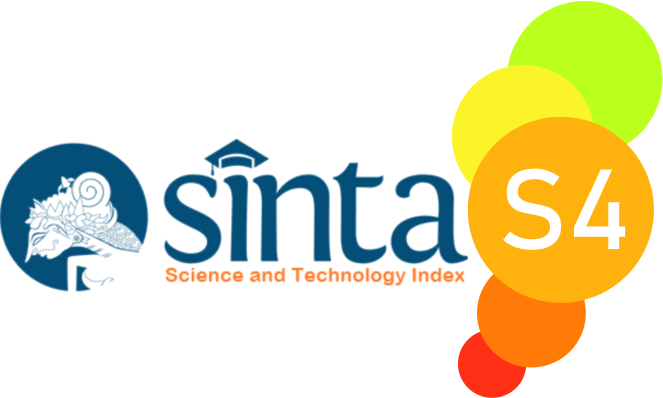Study in Indonesia Pilot Academy, Why not? : A Website Representation of Critical Discourse Analysis
Abstract
Indonesia Pilot Academy utilizes language as an impactful tool to affect people’s perceptions. An electronic website is becoming increasingly vital for academy and candidate cadets by employing language as information and representation. The portrayal of Indonesia Pilot Academy represents the use of linguistic representation on the website and the contribution of this to understanding the overlapping factors that reinforce academic practices within the Indonesia flight-social structure. There are unanswered questions related to the study comparing and analyzing the diverse discourses used to represent Indonesia flight academy on its website regarding social constructs (e.g., gender and race). Then, the study aims to determine website language represented as academic quality, product, and social construct. The data was taken from the website of the academy. To that end, critical discourse analysis (CDA) is utilized to describe, analyze, and interpret the textual and visual representations of the Indonesia Pilot Academy website at the local, institutional, and societal levels. What is surprising is that the academy should encourage global political involvement with promotional discourse and visual images. This finding has important implications for fostering international promotional discourse and pictures to emphasize prestige and uniqueness.
References
Bhatia VK (2013) Analysing Genre: Language Use in Professional Settings. Oxon: Routledge.
Denzin, N. K., & Lincoln, Y. S. (Eds.). (2000). Handbook of qualitative research (2nd ed. ed.). Sage.
Don Hossler (1998) Choosing Colleges: How Social Class and Schools Structure Opportunity, The Journal of Higher Education, 69:5, 583-585, DOI:10.1080/00221546.1998.11775153
Fairclough, N. (1992b). Intertextuality in critical discourse analysis. Linguistics and Education, 4(4), 269 293. https://doi.org/10.1016/0898-5898(92)90004-G.
Fairclough, N. (1995). Media discourse. Longman.
Farasatkhah. M., The history of university in Iran (Tehran: Institute For Social and Cultural Studies,2018), pp. 302–346.
Fernandez, A., Insfran, E., & Abrahão, S. (2011). Usability evaluation methods for the web: A systematic mapping study. Information and Software Technology, 53(8), 789–817.
Flowerdew, J., & Richardson, J. E. (Eds.). (2017). The Routledge handbook of critical discourse studies. Taylor & Francis.
Goffman, E. (1979). Gender advertisements. London: Macmillan.
Graham, C. (2013). Discourses of widening participation in the prospectus documents and websites of six English higher education institutions. British Journal of Sociology of Education, 34(1), 76–93.
Green, D., & Pearson, J. M. (2006). Development of a Web site usability instrument based on ISO 9241-11. Journal of Computer Information Systems, 47(1), 66–72.
Heigham, J., & Croker, A., R. (2009). Qualitative Research in Applied Linguistics. Palgrave Macmillan.
icpa-banyuwangi.ac.id/.(2023,05 june 2023). Accessed by May, 30 2023, from https://www.icpa-banyuwangi.ac.id/
Janks, H. (2005). Language and the design of texts. English Teaching: Practice and Critique. 4(3), 97–110.
Karani, A., Thanki, H., & Achuthan. (2021). Impact of University Website Usability on Satisfaction: A Structural Equation Modelling Approach. Management and Labour Studies. 46(2) 119–138. DOI: 10.1177/0258042X21989924.
Kazemi. A. V., & Safari. S. (2020) Travelling concepts: the story of the commodification of higher education in Iran. Critique, 48:4, 405-428, DOI:10.1080/03017605.2020.1850680
Kress, G., & Van Leeuwen, T. (2006). Reading images: The grammar of visual design. Routledge.
Manar, M. (2022). Hybridity Across Linguistic Studies. Journey: Journal of English Language and Pedagogy, 5(2), 281–292. https://doi.org/10.33503/journey.v5i2.2028
Hall, S. (1997). The spectacle of the “other”. In S. Hall (Ed.), Representation: cultural representations and signifying practices (pp. 223–279). Sage Publications.
McDonough, P. M. (1994). Buying and selling higher education: The social construction of the college applicant. The Journal of Higher Education, 65(4), 427–446.
Morizumi, F. (2017). Representations of ‘Internationalization’on University Websites with Specific Reference to Seikei University.
Naderifar, M., Goli, H., & Ghaljaie, F. (2017). Snowball sampling: A purposeful method of sampling in qualitative research. Strides in Development of Medical Education, 14(3), 1–6. https://doi.org/10.5812/sdme.67670
Peker, S., Kucukozer-Cavdar, S., & Cagiltay, K. (2016). Exploring the relationship between web presence and web usability for universities: A case study from Turkey. Program, 50(2), 157–174.
Pinto, M., Guerrero, D., Fernández-Ramos, A., & Doucet, A. V. (2009). Information provided by Spanish university websites on their assessment and quality processes. Scientometrics, 81(1), 265–289. https://doi.org/10.1007/s11192-008-2123-7.
Rahman, S., Md., & Ahmed, Z., Sm. (2013). Exploring the factors influencing the usability of academic websites: A case study in a university setting. Business Information Review. 30(1) 40–47. DOI: 10.1177/0266382113482557.
Saichaie, K. (2011). Representation on college and university websites: An approach using critical discourse analysis (doctoral dissertation). The University of Iowa, USA.
Santelices, Verónica & Zarhi, Magdalena & Horn, Catherine & Catalán, Ximena & Ibáñez, Alicia. (2020). Information sources and transition to higher education: Students, teachers and school counselors´ perspectives. International Journal of Educational Research. 103. 101617. 10.1016/j.ijer.2020.101617.
Svendsen, J.T., & Svendsen, A.M. (2018). Social life for sale! A critical discourse analysis of the concept of student life on Danish university websites. Discourse: Studies in the Cultural Politics of Education, 1–22.
Tahririan, M. H., & Sadri, E. (2013). Analysis of Images in Iranian High School EFL Course Books Iranian Journal of Applied Linguistics (IJAL), 16 (2), 137-160
Widodo, H. P. (2015b). The development of vocational English materials from a social semiotic perspective: Participatory action research (Unpublished PhD thesis). The University of Adelaide, Australia.
Zaphiris, P., & Kurniawan, S. (2007). Human computer interaction research in web design and evaluation. IGI Global.
Copyright (c) 2023 Hastowo Hadi, Rangga Handika Putra, Adolf Andrea Marantika, M. Arief Rakhman

This work is licensed under a Creative Commons Attribution-ShareAlike 4.0 International License.

Journey: Journal of English Language and Pedagogy by http://ejurnal.budiutomomalang.ac.id/index.php/journey/index is licensed under a Creative Commons Attribution-ShareAlike 4.0 International License.






